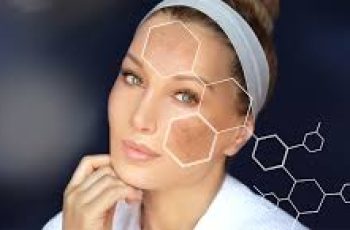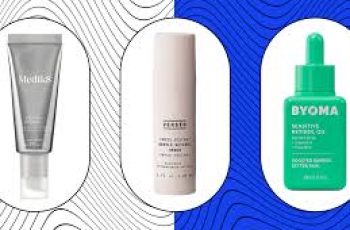
Tyrosinase Inhibitors for Skin Lightening: Understanding the Science Behind Treating Hyperpigmentation
Hyperpigmentation, which manifests as dark spots, uneven skin tone, melasma, and post-inflammatory hyperpigmentation (PIH), remains one of the most common and frustrating issues faced by individuals seeking clearer, more radiant skin.
Among the various approaches to address these concerns, tyrosinase inhibitors stand out as a scientifically proven and highly effective method to reduce melanin production and help even out skin discoloration.
In this comprehensive guide, we’ll explore the fundamental science behind tyrosinase inhibitors, how they function, which ingredients are most effective, and how to incorporate them properly into a skincare routine to maximize results.
Whether you are dealing with stubborn dark spots from sun damage or melasma caused by hormonal changes, understanding these details will empower you to make informed choices for your skin.
What is Tyrosinase?
Tyrosinase is an enzyme that plays a pivotal role in melanin synthesis, the process responsible for producing pigment in the skin, hair, and eyes.
This enzyme contains copper at its active site and catalyzes critical steps converting the amino acid tyrosine into dopaquinone, which then leads to the formation of two types of melanin pigments:
Eumelanin: The brown to black pigment primarily responsible for darker skin tones.
Pheomelanin: The yellow to red pigment found in lighter skin and hair.
The activity of tyrosinase directly influences how much melanin your skin produces, making it a prime target for treatments aimed at reducing hyperpigmentation.
How Do Tyrosinase Inhibitors Work?
Tyrosinase inhibitors reduce the enzyme’s ability to synthesize melanin, effectively slowing down or halting the pigmentation process. These inhibitors act through several mechanisms:
Blocking the Enzyme’s Active Site
Certain molecules fit into the enzyme’s active site, preventing tyrosinase from catalyzing the chemical reactions needed for melanin production.
Chelating Copper Ions
Tyrosinase requires copper ions to function properly. Some inhibitors bind to these copper ions, effectively “disarming” the enzyme.
Neutralizing Free Radicals
Oxidative stress can increase melanin synthesis. Antioxidant tyrosinase inhibitors scavenge free radicals, reducing oxidative stimulation of melanin production.
Altering Melanin Pathways
Some inhibitors encourage the production of pheomelanin, a lighter pigment, over eumelanin, thereby lightening the skin tone.
By targeting these pathways, tyrosinase inhibitors offer a multi-pronged approach to diminishing pigmentation.
Who Should Use Tyrosinase Inhibitors?
If you struggle with skin discoloration issues such as melasma, sun spots (also called solar lentigines), PIH caused by acne or injuries, or simply desire a more uniform complexion, tyrosinase inhibitors can be an excellent addition to your skincare routine.
It’s particularly beneficial for people with skin types prone to hyperpigmentation, including many classified under the Baumann Skin Types®, where 8 out of 16 types show susceptibility to pigmentary issues.
Recommended Tyrosinase Inhibitor Products
Dermatologists often recommend incorporating tyrosinase inhibitors alongside other supportive ingredients such as sunscreens, exfoliants, retinoids, and anti-inflammatory agents for the best results.
Some of the most effective and trusted products available include:
Derma Made Mela-Fade – Known for its potent combination of melanin inhibitors and skin-soothing ingredients.
Alastin A-Luminate Brightening Serum – Combines peptides with lightening actives for enhanced skin clarity.
Cyspera Intensive Pigment Correcting Serum – Uses cysteamine, a unique tyrosinase inhibitor that also boosts antioxidant activity.
ISDIN Melaclear Advanced – A pharmaceutical-grade option with multiple tyrosinase inhibitors.
SkinCeuticals Discoloration Defense – Combines tranexamic acid, kojic acid, and other actives targeting multiple pigmentation pathways.
How to Use Tyrosinase Inhibitors Effectively
Achieving visible improvement requires consistency and proper usage:
Apply Daily: For maximum efficacy, use tyrosinase inhibitors every day on freshly cleansed skin.
Layer Correctly: Apply them after cleansing but before moisturizer and sunscreen to ensure penetration.
Combine with Complementary Actives: Use alongside exfoliants like glycolic acid or salicylic acid, antioxidants like vitamin C, and PAR-2 inhibitors to reduce melanin transfer.
Use Moisturizers Rich in Unsaturated Fatty Acids: Oils such as argan, rosehip, or squalane help maintain skin barrier health and enhance ingredient absorption.
Sun Protection is Essential: Daily application of a broad-spectrum, tinted mineral sunscreen with iron oxides protects from UV and visible light, which can worsen pigmentation.
Take Periodic Breaks: Every 3–4 months, consider a 2–4 week “tyrosinase holiday” to reduce the risk of resistance or irritation.
Tyrosinase Inhibitor Ingredients Categorized by Strength
Strong Tyrosinase Inhibitors 🔥
These tend to deliver faster and more pronounced lightening effects but may have a higher risk of irritation or side effects if not used properly:
Thiamidol (Isobutylamido-thiazolyl-resorcinol)
Hydroquinone (considered the gold standard but regulated in many countries)
Resorcinol
Hexylresorcinol
Kojic Acid
Moderate Strength ⚖️
These provide effective inhibition with generally fewer side effects, suitable for long-term use:
Arbutin
Azelaic Acid
Vitamin C (Ascorbic Acid)
Ellagic Acid
Licorice Extract (Glabridin)
Emblica (Indian Gooseberry)
Paper Mulberry Extract
Retinol
Artemisia Capillaris
Saururus chinensis (Asian Lizard’s Tail)
Weaker Tyrosinase Inhibitors 🌿
Gentle options that minimize irritation, ideal for sensitive skin or maintenance phases:
Aloesin
Dimethylmethoxy Chromanyl Palmitate
Flavonoids (e.g., Resveratrol)
Natural Oils That Inhibit Tyrosinase
Certain plant oils rich in unsaturated fatty acids naturally inhibit tyrosinase and help repair and protect the skin barrier. These include:
Argan Oil ,Avocado Oil, Borage Seed Oil, Rosehip Oil, Safflower Oil, Sunflower Oil, Olive Oil, Marula Oil, Soybean Oil, Sesame Oil, Grapeseed Oil, Evening Primrose Oil, Tsubaki Oil
Use these oils either as part of your moisturizer or layered over brightening serums for enhanced effect.
Ingredients That Lighten Skin but Are Not Direct Tyrosinase Inhibitors
Some commonly used brightening ingredients work through different mechanisms, such as reducing melanin transfer to skin cells or exfoliating pigmented cells:
Ingredient Primary Mechanism
Niacinamide PAR-2 blocker; reduces melanin transfer
Salicylic Acid Exfoliant (BHA); effective for oily, acne-prone skin with PIH
Glycolic Acid AHA exfoliant; increases skin cell turnover
Tranexamic Acid Reduces plasmin activity; mild tyrosinase inhibition
Cysteine Shifts melanin synthesis toward lighter pheomelanin
Glutathione Antioxidant; indirectly blocks tyrosinase
Vitamin C and Skin Lightening
Vitamin C (ascorbic acid) is often included in skin lightening regimens, though it is a moderate tyrosinase inhibitor. It plays several important roles:
Prevents oxidation of melanin, helping prevent darkening.
Stimulates collagen production, improving skin texture.
Provides photoprotection against UV-induced pigmentation.
However, vitamin C can be unstable when exposed to air and light, and its acidic nature may cause stinging in sensitive skin.
For this reason, it’s best used in combination with other ingredients or during a “tyrosinase holiday” phase.
How Long Does It Take to See Results?
Biochemical changes begin immediately, but visible results require time:
6–8 weeks for mild discoloration.
12–16 weeks or more for deeper pigmentation or melasma.
Pigmentation located deeper in the dermis may take longer to improve.
Avoiding UV and blue light exposure during this time is essential to prevent reversal of progress.
Tips to Accelerate and Maximize Results
Use multiple tyrosinase inhibitors synergistically.
Pair them with antioxidants and exfoliants.
Apply ingredients in the correct order (cleansing → treatment → moisturizer → sunscreen).
Use moisturizing oils to improve absorption.
Rotate use: 3 months on, 1 month off to prevent tolerance.
Always use broad-spectrum SPF indoors and outdoors.
Tailoring Your Routine to Your Skin Type
Not every skin type tolerates the same treatments well. The Baumann Skin Type® system is a helpful framework for matching the right ingredients with your unique needs based on:
Skin sensitivity
Oiliness or dryness
Acne propensity
Inflammation tendency
Customized approaches help avoid irritation while optimizing skin lightening.
Final Thoughts
Treating hyperpigmentation effectively requires dedication and patience.
Tyrosinase inhibitors represent a scientifically validated and powerful class of ingredients to lighten dark spots and create a more even complexion.
However, they work best when combined with a comprehensive skincare routine, diligent sun protection, and periodic breaks to maintain skin health and prevent resistance.
With the right knowledge and products, it’s possible to significantly improve pigmentary issues and enjoy brighter, more radiant skin.


